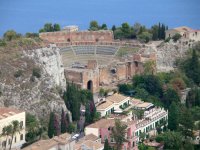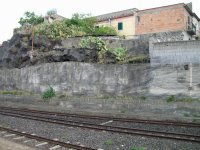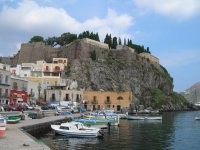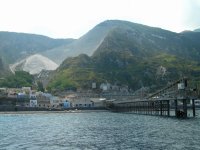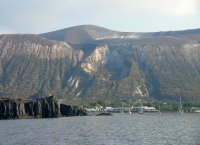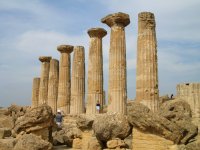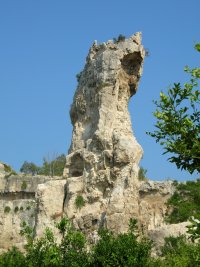
Mt Profotis Ilias on the left and Megalo Vuono on the right.
This is the highest point of the island and is composed of limestone.
>> Scroll right for the next photo:
The Minoan deposits showing the four stages of erruption.
Note the bombs embedded in the layers.
This is the highest point of the island and is composed of limestone.
>> Scroll right for the next photo:
The Minoan deposits showing the four stages of erruption.
Note the bombs embedded in the layers.


Red Beach near Akrotiri. The fissure that these pre-Minoan erruptions extruded from can be seen on the right.
The paler Minoan deposits form the new land on the left.
Scroll down for : Nea Karmeni, the new volcano forming in the centre of the caldera.
The paler Minoan deposits form the new land on the left.
Scroll down for : Nea Karmeni, the new volcano forming in the centre of the caldera.
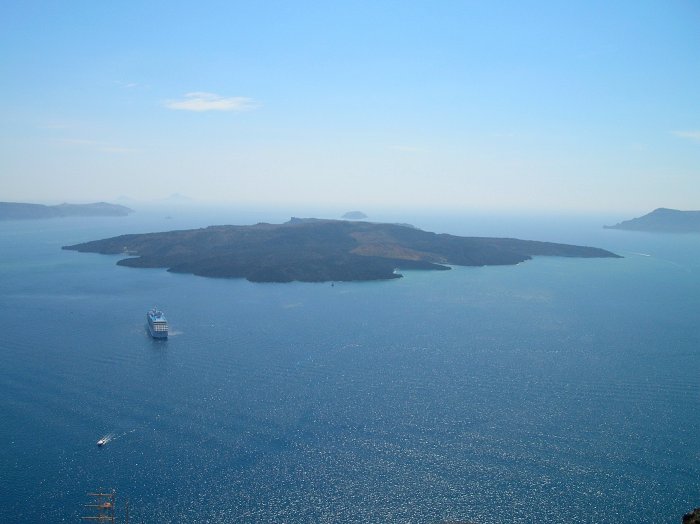

Above:
Approaching Skaros in the boat. This was the site of the Island's capital in the 15th Century. Prints exist showing many houses clinging to the side of this promontary.
Right:
This shows a dyke where the lava forced its way through a pre-existing fault. The downthrow on the right is clearly visible.
Approaching Skaros in the boat. This was the site of the Island's capital in the 15th Century. Prints exist showing many houses clinging to the side of this promontary.
Right:
This shows a dyke where the lava forced its way through a pre-existing fault. The downthrow on the right is clearly visible.
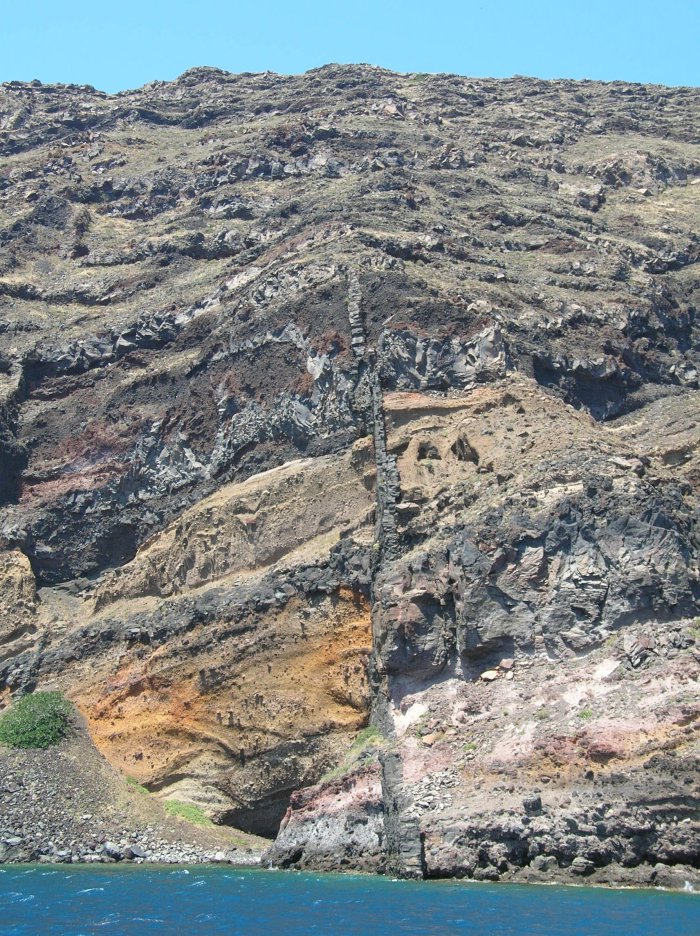
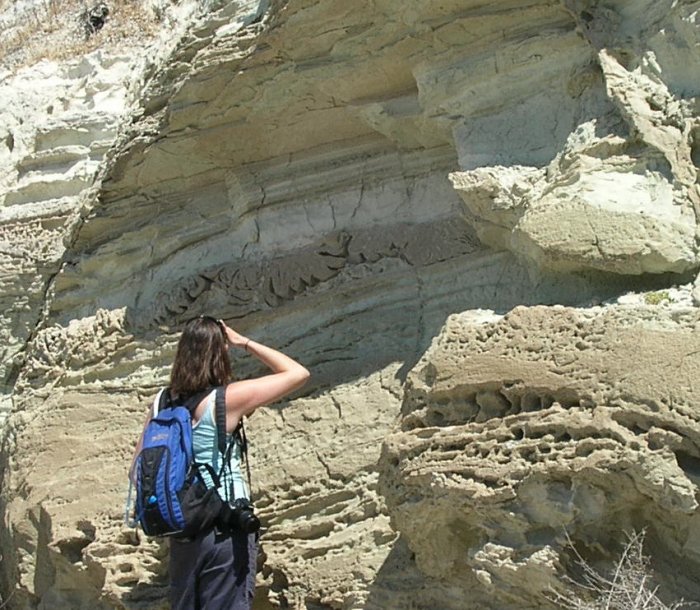
It is a matter of conjecture what caused this massive distortion in otherwise level deposits.
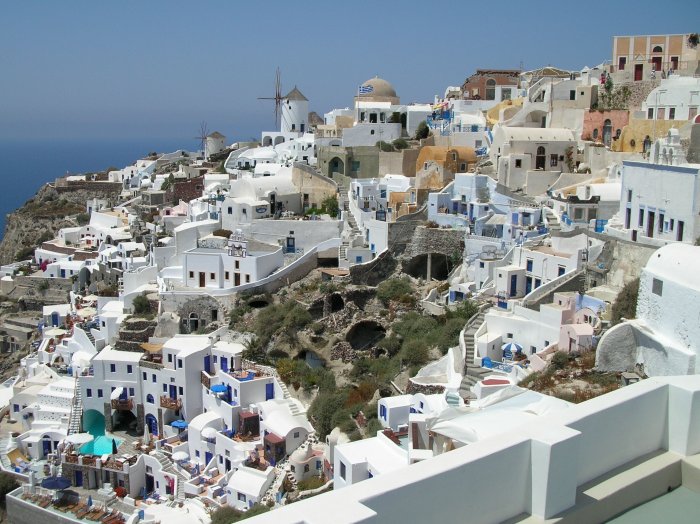
This shows the idyllic village of Oia. Closer inspection shows the unrepaired damage from the earthquake in 1956.

